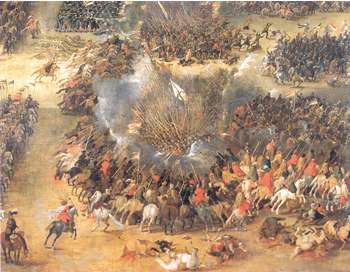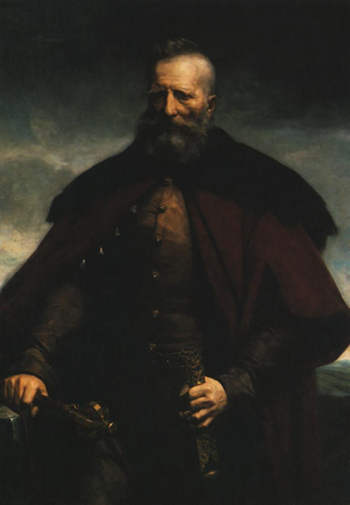
Battles and Campaigns
|
|
Swedish Polish War 1600 to 1609 Overview of the War 1601 Spring-Summer Campaign The fundamental factor in the Polish-Lithuanian Commonwealth's success during this period was Radziwill maintaining the initiative. Despite weak forces he did not wait with indifference for the relief army, but actively searched for battle with any potential relief forces before they could be properly ready. Questions have been raised as to whether after Kokenhausen Radziwill should have struck at Gyllenhjelm at Burtneck to destroy the Swedish forces. This would have been imprudent bearing in mind the enemy's numerical superiority and fortified position. The Swedes did learn as their operations progressed. The Summer operations were directed at their main target Riga rather than being distracted by other targets. They also found the best route, the coastal road. However one must question the timing of the attack on Riga, which would involve a significant siege, at a time when it was known that sizeable Royal forces would soon be approaching. 1605 Campaign and Kircholm
Kircholm is one of the few examples in modern history up till W.W.II of a victory of the type of Canne, envelopment of the main enemy forces, and exceptional with forces so decisively disadvantaged in numbers. The Swedish operations at operational level were effective when Lennartsson evaded battle in the open field and the Swedish intentions to utilise marshes, forests or fortifications to their advantage. The new Swedish battle order used at Kircholm embraced correct concepts so as to neutralise the superiority of the Polish-Lithuanian cavalry. However it had not been tested in practice. The use of significant depth and the mixing of cavalry and infantry would be successfully adjusted by Gustav Adolf. The Swedes were correct in their selected area of operations - Riga and the shortest route to her - by sea. 1609 Campaign
But the brilliance of Chodkiewicz still shines through. Operating with small forces in difficult conditions he achieved many successes. Surprising the Swedes with quick forced marches in unexpected directions. Even where he was surprised he was able to improvise and turn defeat into victory. |
|
![]()
 Kircholm
is not a simple success of masses of hussars like Lubieszow, Kokenhausen
or Bialy Kamien. Here is not only a defeat but total destruction
of the main enemy forces. Chodkiewicz was aware of the significant
tactical superiority of his cavalry and so went further than Radziwill
at Kokenhausen. He formed not one but two attack groups with the
aim of not just breaking but also surrounding the Swedish centre
after the destruction of both enemy wings. He organised one of the
groups, his left wing, to be two times stronger than the other wing
and only with this wing did he have local numerical superiority.
This was a classic example of the economic use of force, even though
the enemy had almost three times numerical superiority. This is
however a consequence of the formation of not one but two attack
groups and, though rather small, the reserve played a critical role.
Kircholm
is not a simple success of masses of hussars like Lubieszow, Kokenhausen
or Bialy Kamien. Here is not only a defeat but total destruction
of the main enemy forces. Chodkiewicz was aware of the significant
tactical superiority of his cavalry and so went further than Radziwill
at Kokenhausen. He formed not one but two attack groups with the
aim of not just breaking but also surrounding the Swedish centre
after the destruction of both enemy wings. He organised one of the
groups, his left wing, to be two times stronger than the other wing
and only with this wing did he have local numerical superiority.
This was a classic example of the economic use of force, even though
the enemy had almost three times numerical superiority. This is
however a consequence of the formation of not one but two attack
groups and, though rather small, the reserve played a critical role.
 The
1609 campaign had a transitional Character between the Polish-Lithuanian
victories of 1601-05 and the later successes of Gustaf Adolph (1621-1629).
The
1609 campaign had a transitional Character between the Polish-Lithuanian
victories of 1601-05 and the later successes of Gustaf Adolph (1621-1629).